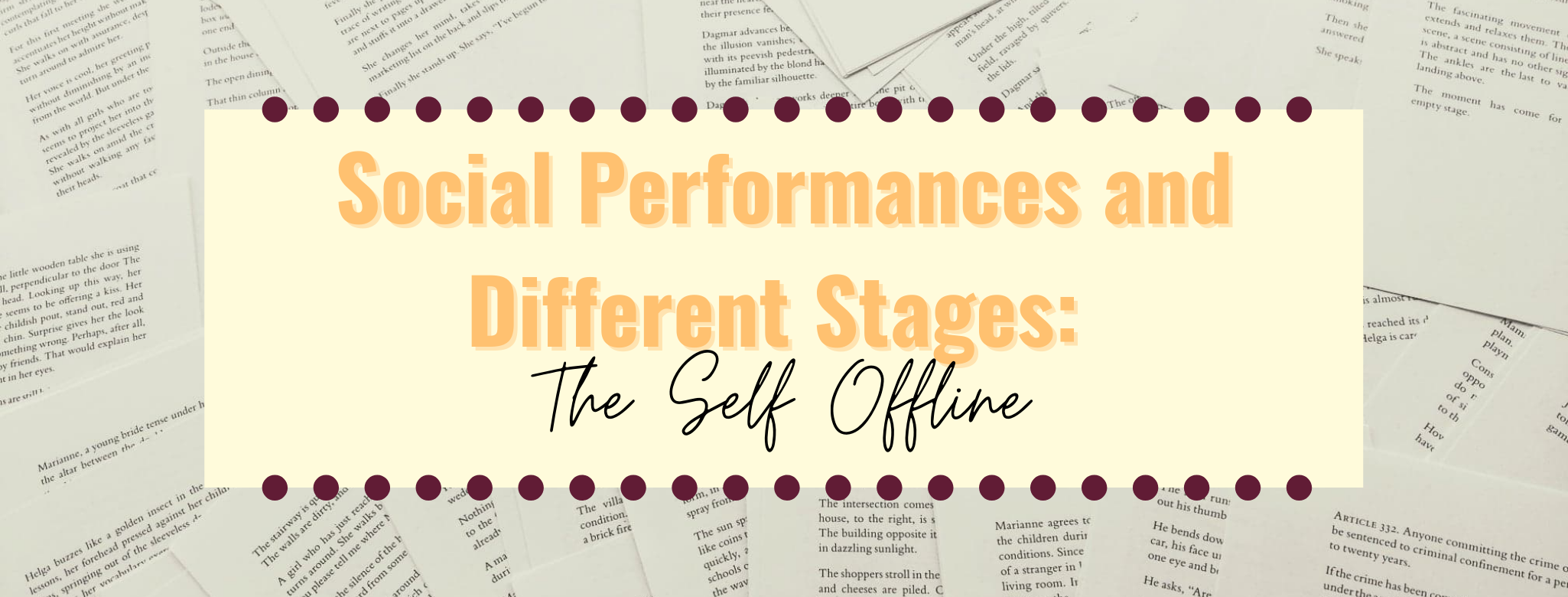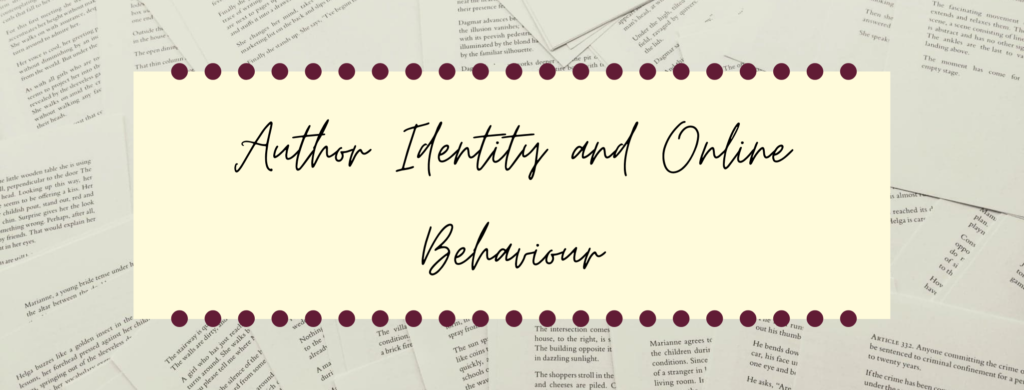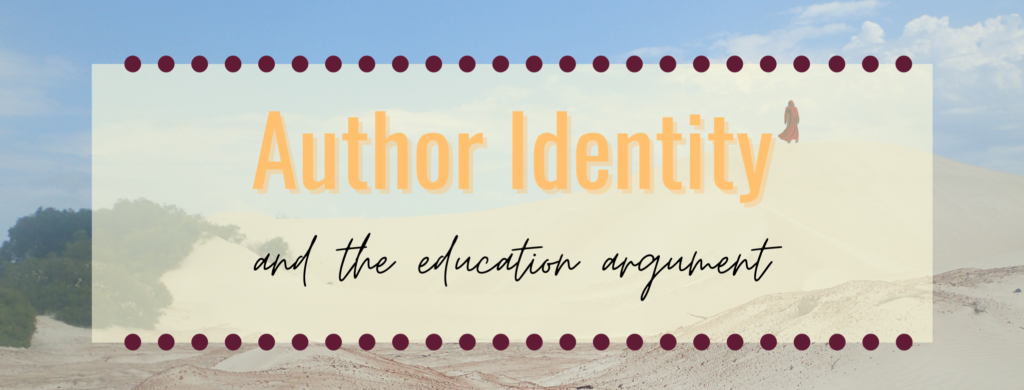There are a number of different theories relating to identity. Some are more focused on our personal selves and others look at the public self. Most recently, my focus has centred on the self as a construction – a performance, if you want to use Erving Goffman‘s language. Goffman looked at the self from a social perspective, where the “front” acts as the space for the individual to take on the “face” or “mask” needed for that situation. It’s the public stage, where the performer acts out their role. “Backstage”, the face drops and the performer has space to relax and prepare for their next social performance. No one has only one stage. At work, the needs of your social performances differ than the performances that would happen “onstage” in your family home, for example.
I’ve spoken before about this idea of masks and social performances before but my thoughts are still developing. I’m slowly figuring out where the boundaries within my performance are and, perhaps more interestingly, where they are not. This author self was supposed to be as close to my “real” self as possible, but there are areas that feel more natural than others. Or felt (more on that in the next blog). The self-reflective side of my research means constantly trying to figure out where I feel most like the “real” me. Or what bits I’m reluctant to share and why. I’m realising that this has a lot to do with stages – both in terms of performance spaces and steps in my journey. So, this week, let’s talk about offline stages.
Offline Stages
We all perform on a multitude of stages. In our everyday (usually) offline lives, this means many different audiences to adapt to. Goffman – the reigning king of examples in academic writing – talks about the performances involved in the running of a shop. Around a customer, a shop assistant may act congenial, well-spoken, and busy at work – but this is only one audience. Once the customer leave, the shop assistant may relax their ‘customer face’, reflecting on the performance just past to see how to improve in the future, or taking a moment to recover. But interaction with other members of their team may necessitate another type of performance, crafted to suit this second audience. Then, when they return home, they work on their family stage instead.
I’m sure we can all see some truth in this. Having worked in retail, I can 100% confirm that I’m a different person to my colleagues than I am to customers, but this is different again to the ‘me’ I am at home. The different environments and audiences have different needs. It makes sense, right? But, since my research involves a lot of self-reflection and obsession over identity, I’ve been thinking a lot about where I feel most like “me”. These performances are, to some degree, all “real”, but some come more easily than others. Even more interestingly, I’ve started to realise that this also can vary over time.
Layered Masks
I first started writing a version of this post a few months ago after a conversation with a friend about social circles and comfort. They had found themselves in a social situation that they knew should have been fun, but ultimately found that they couldn’t relax in. To illustrate, let’s say they were camping with work friends. Comparing it to similar events with other social circles, there was no reason for it to feel as hard as it was. As someone who is very aware of my own social performances though, this all made sense to me. You see, the social environment they were in didn’t match the audience they were interacting with. We typically interact with work friends in a work environment. We all use similar scripts there. Outside of work… How do you work out who you’re supposed to be?
In my offline life, I like to keep my various social performances separate until someone has reached a level of friendship where they transcend their ‘stage’. It may seem rigid to some people, but it’s my way of dealing with underlying social anxiety. I relax into who I’m supposed to be based on the audience I’m with. It makes sense then that seeing an audience in the ‘wrong’ place would throw you off a bit. You can’t rely on your usual script and suddenly the mask you’re supposed to wear seems different. Do you wear both? Good friends get to see the layered masks come off, but that takes time. It’s like this unlockable extra content; you reach the next stage of friendship.
Identity Performances
I quite like having a clearly defined social role, as you may have gathered. If I have a job, give me a uniform, a place to stand, and clear expectations and I’ll perform my role well. One of my favourite things at the moment is DnD with some friends. My character is not me but she offers me a defined role to step into. It’s weirdly relaxing. Even with the chance elements of dice and other characters, I feel comfortable stepping into the role. Which, in the ongoing self-interrogation that is my research, makes me wonder why I’m comfortable being a made up character more than I am in dealing with aspects of my real life identity.
The dissertation chapter I’m working on builds on the idea of social performances – and the way we construct our masks – to consider how our identities inform others’ perception of us. Gender, race, sexuality… they’re aspects of ourselves that we can’t escape. And, while there is no one way to be a woman/white/bi/etc, people make assumptions based on these things. I, for example, would broadly identify myself as queer (I like the broad term) but, unlike my jobs or my DnD character, there’s no defined way for me to embody that aspect of myself. So, for the most part, I just awkwardly ignore it until it’s needed. As I’m researching, I’m starting to realise I do this with several aspects of the “real” me. I diminish/hide parts of myself that don’t seem immediately necessary and I’m privileged in that, in my offline life, I can make that choice.
Social Performances Offline
In the offline world, we typically only show certain parts of ourselves to each different audience. These social performances are shaped by the audience, the expectations of the role, and the stage we’re performing on. Even the level of familiarity with an audience can play a part, influencing who we feel comfortable with and what they get to see of the self behind the mask. As I’m learning through this process, however, you don’t always get to control what other people see. With more of our lives becoming visible through social media, it’s much harder to leave elements of yourself unseen.
In the next blog post, I’m going to think further on this by considering social performances on online stages. In the meantime, I’d love to hear your thoughts and experiences below! How do you deal with the different masks you wear?



